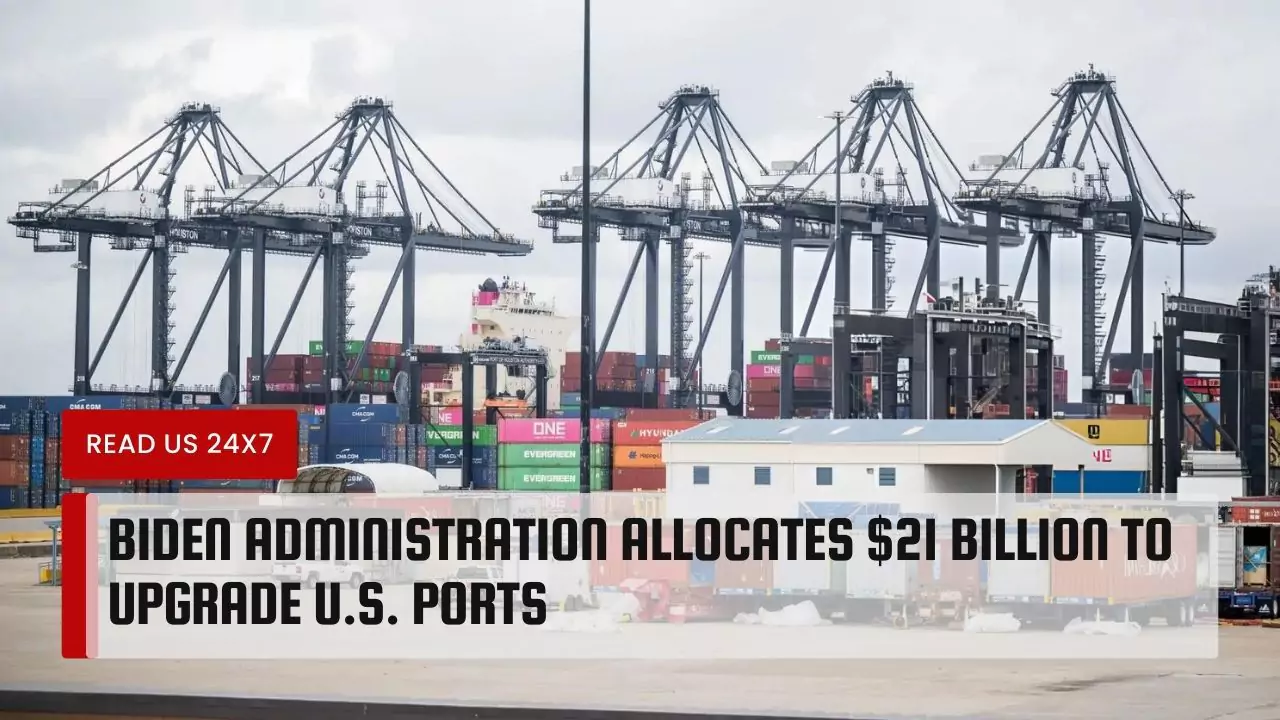The Biden administration has announced a $21 billion plan to modernize the U.S. ports, which are vital for the nation’s economy and security. The plan aims to address the challenges faced by the ports, such as inadequate infrastructure, growing demand for international trade, and outdated technology. The plan also seeks to enhance the efficiency, productivity, and competitiveness of the ports, as well as to boost the local economies of the port cities.
The Need for Modernization in U.S. Ports
The U.S. ports are essential for the movement of goods and people across the country and the world. According to the U.S. Department of Transportation, the ports handle about 95% of the nation’s foreign trade by volume and support more than 23 million jobs. However, the ports are facing several issues that hamper their performance and potential.
One of the main issues is the inadequate infrastructure of the ports, which limits their capacity and reliability. Many of the ports are congested, outdated, and vulnerable to natural disasters and climate change. For instance, the Port of Los Angeles, the busiest port in the U.S., has been struggling with a backlog of ships and containers due to the surge in demand during the pandemic. The port also faces the risk of earthquakes, tsunamis, and sea level rise.
Another issue is the growing demand for international trade, which puts pressure on the ports to handle more and larger ships and containers. The global trade volume is expected to increase by 32% by 2030, and the average size of container ships is projected to grow by 55% by 2025. The ports need to expand and upgrade their facilities and equipment to accommodate these changes and to maintain their competitiveness in the global market.
A third issue is the outdated technology of the ports, which affects their efficiency and security. Many of the ports rely on manual and paper-based processes, which are slow, costly, and prone to errors and fraud. The ports also lack the digital and automation capabilities that can improve their operations and resilience. For example, the Port of New York and New Jersey, the second busiest port in the U.S., has been lagging behind other ports in terms of implementing smart technologies, such as sensors, cameras, and blockchain.
The $21 Billion Investment in U.S. Ports
To address these issues and to revitalize the U.S. ports, the Biden administration has proposed a $21 billion plan as part of its $2 trillion infrastructure package. The plan includes the following components:
- Grants towards modernization projects: The plan allocates $17 billion for grants to support the modernization of the ports, such as improving their infrastructure, expanding their capacity, and enhancing their safety and security. The grants will be distributed based on the needs and priorities of the ports, with a focus on those that serve the national defense, the national economy, or the national health.
- Funding for improvements in cargo handling: The plan provides $3 billion for funding to improve the efficiency and productivity of the ports, especially in terms of cargo handling. The funding will support the adoption of new technologies and practices, such as digitalization, automation, and electrification, that can reduce the costs, delays, and emissions of the ports.
- Investment in port cities like Baltimore: The plan invests $1 billion in port cities, such as Baltimore, that have significant potential for economic growth and job creation. The investment will help the port cities to develop their infrastructure, workforce, and innovation ecosystems, as well as to address the environmental and social impacts of the ports.
Impact of Modernization on U.S. Ports
The $21 billion plan to modernize the U.S. ports is expected to have a positive impact on the ports and the nation as a whole. Some of the expected benefits are:
- Improved efficiency and productivity: The plan will help the ports to improve their efficiency and productivity, by increasing their capacity, reducing their congestion, and streamlining their processes. This will enable the ports to handle more and faster trade flows and to provide better service and value to their customers and stakeholders.
- Increased competitiveness in the global market: The plan will help the ports to increase their competitiveness in the global market, by enhancing their quality, reliability, and security. This will enable the ports to attract more and larger ships and containers and to gain a larger share of the global trade volume and value.
- Growth in local economies: The plan will help the ports to stimulate the growth of their local economies, by creating more jobs, income, and opportunities. The plan will also help the ports to improve their environmental and social performance, by reducing their emissions, pollution, and noise, and by increasing their community engagement and inclusion.



